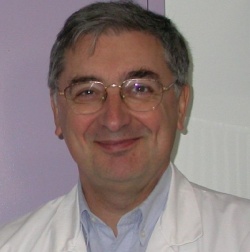ECR 2011 - Cutting to the chase and priming radiologists to become clinicians
A major gathering of medical specialists presents not only a perfect time to summarise the status-quo but also to assess the role of the specialty in the future. This year’s European Society of Radiology Congress aims to reach far into radiological horizons by launching attendees into a radiological setting in the year 2025. ECR 2011 will also enter the 5th dimension of CT.

Along with providing a stimulating and pleasurable meeting the organisers will tackle some uncomfortable subjects -- such as the need to increase clinical knowledge and how to establish this within a hospital setting. Seeing radiology in a new light is the aim of this year’s congress president Professor Yves Menu, who has therefore initiated a ‘programme revolution’ that departs from the traditional paths taken in the common course sessions. In an interview with the professor, Meike Lerner sought the reasons behind this significant divergence
Radiologists attending this year’s ECR can ‘expect more interactivity but on a different level,’ says congress president Yves Menu. ‘My aim for the sessions is to achieve more pointed, more precise and more extended discussion. Therefore one third of the 90 minutes will be dedicated to a panel discussion. I asked every chairperson not only to introduce speakers but also to prepare topic related questions of practical interest to be debated after the lectures. The reason is to avoid non-typical cases that affect just one in 200 people in the audience, and rather to be comprehensive with the most pending issues. In general, the questions of interest arising from the lectures are clear and, for the first time, the chairperson collected these in advance and all the answers will be given within the lecture.
‘Another programme innovation is CLICK, which not only means that I hope it will click in the heads of radiologists – it’s an acronym for Clinical Lessons in Imaging Core Knowledge. The starting point of those courses is not radiology and not the disease, but the symptoms. They will be completely organised by radiologists, but I asked them to become clinicians and explain clinical backgrounds. For me this is one of the major challenges of our subject. I think that radiologists are clinicians and therefore will bring functional imaging, for example, into general radiological practice.’
How can knowledge about symptoms play such a big role for radiologists?
‘Because, from my experience, clinicians often cannot speak to other specialists -- sometimes they go far too deeply into the topic, using strange words that no one understands and sometimes they want to teach radiology to the radiologist. We don’t want that. We don’t need somebody talking about, for example, all kinds of cough as a symptom. What we need is somebody who knows the clinical science and extracts the essential questions for the radiologist.
Will this situation be reflected in the sessions?
‘Of course! A perfect example is the Breast Imaging In The Year 2025 session within the New Horizon session. Radiologists who work in breast imaging are very close to clinicians such as radiation oncologists, surgeons, and so on. I want to draw a picture of that sub-specialty in about 15 years’ time -- not a hypothetical one, but one that is as close as possible to reality.
‘Young colleagues should realise what they are likely to be doing in the future and what their working environment will look like. This is not only about technology but also relates to the interaction between clinical science, biological science and radiology. Of course no one can predict the future, but what is predictable is that we should not give up on clinical and biological knowledge because this will be part of our everyday lives and lead to the answer of whether breast imaging will need a clinician with an interest in radiology, a radiologist with a clinical interest, or presumably both.
What about new technologies?
‘They will also play an important role and again the New Horizon session is the starting point into the field of innovations. We’ll focus on the “Quantum leaps of MRI” and will give the reason why MRI will take over so many areas in the future -- because it’s getting better, faster and cheaper. Looking at CT as the work horse of radiology, we’ll enter the 5th dimension, which means we can now analyse the different energy levels of X-ray and look at a single part with all its information. Finally, a mini-course on Tumour Functional Imaging will explain in practice how to implement this cutting edge technique into routine.
‘To summarise: I hope all attendees will leave the congress with new knowledge, new ideas, new tools and new perspectives that will make radiology fit for future.’
03.03.2011











